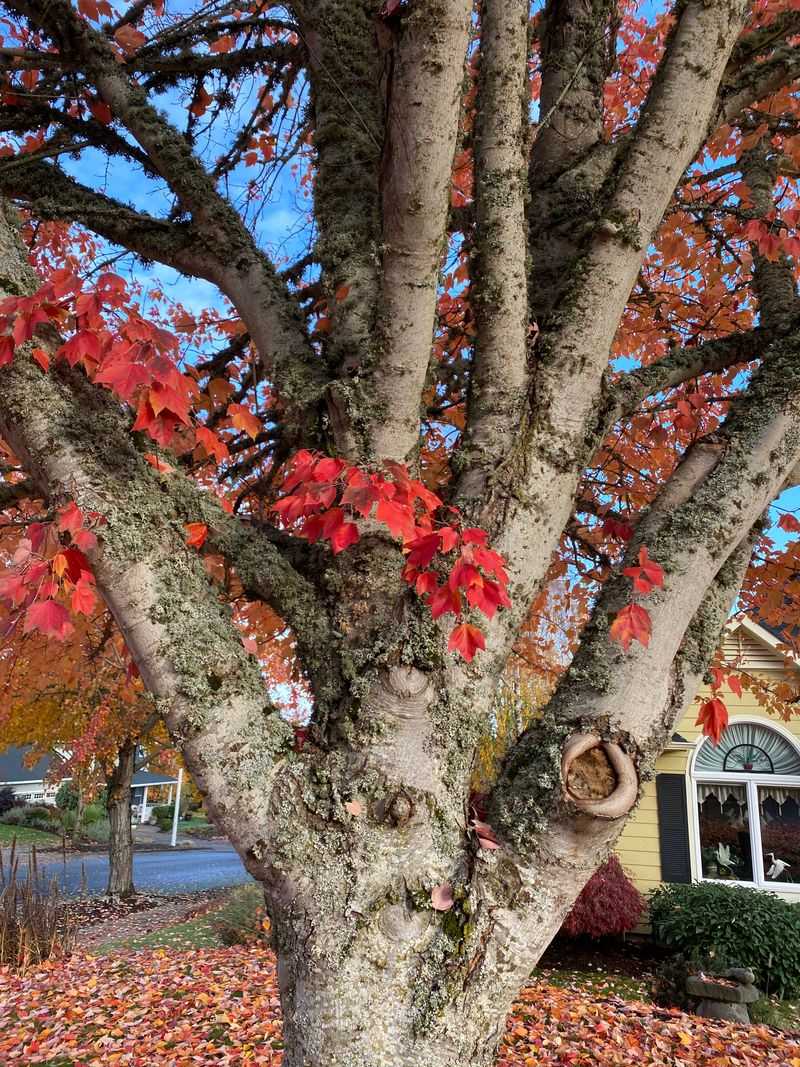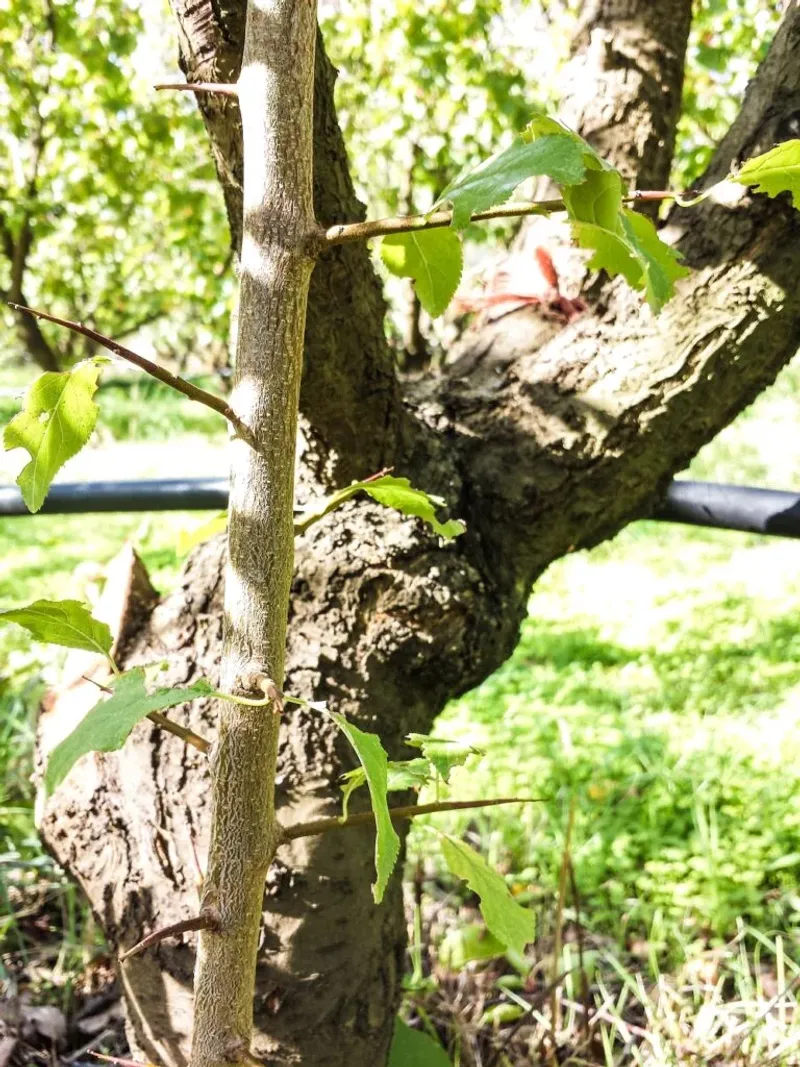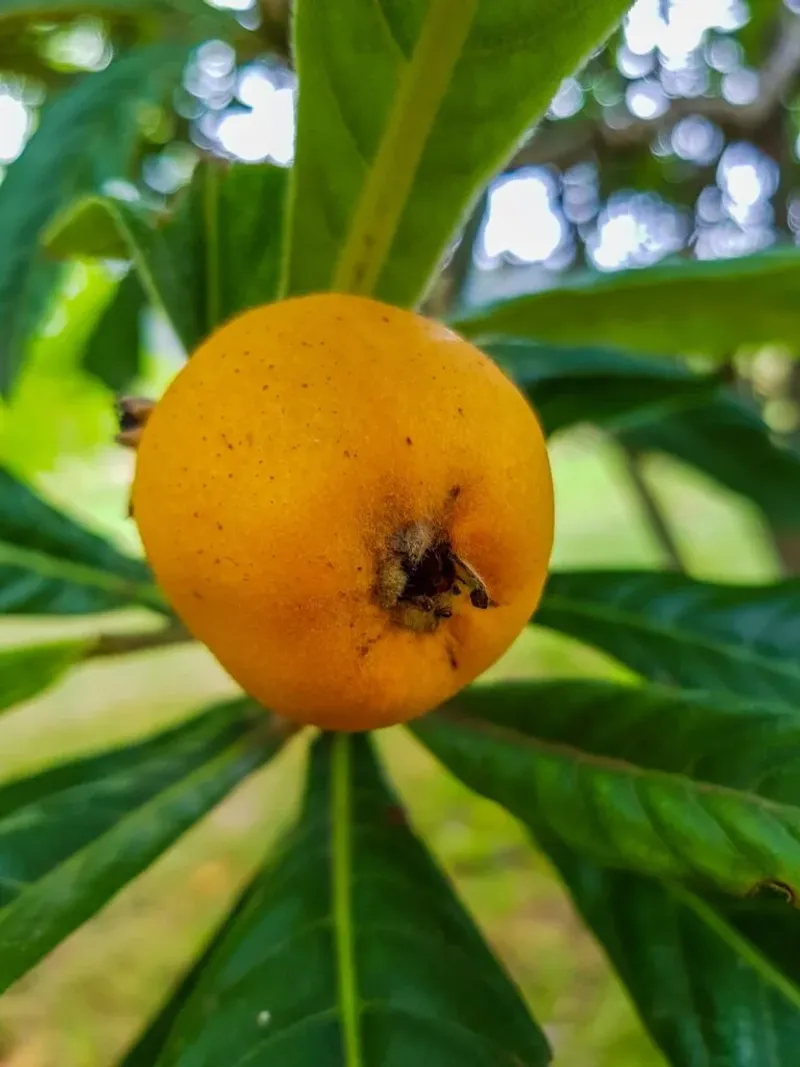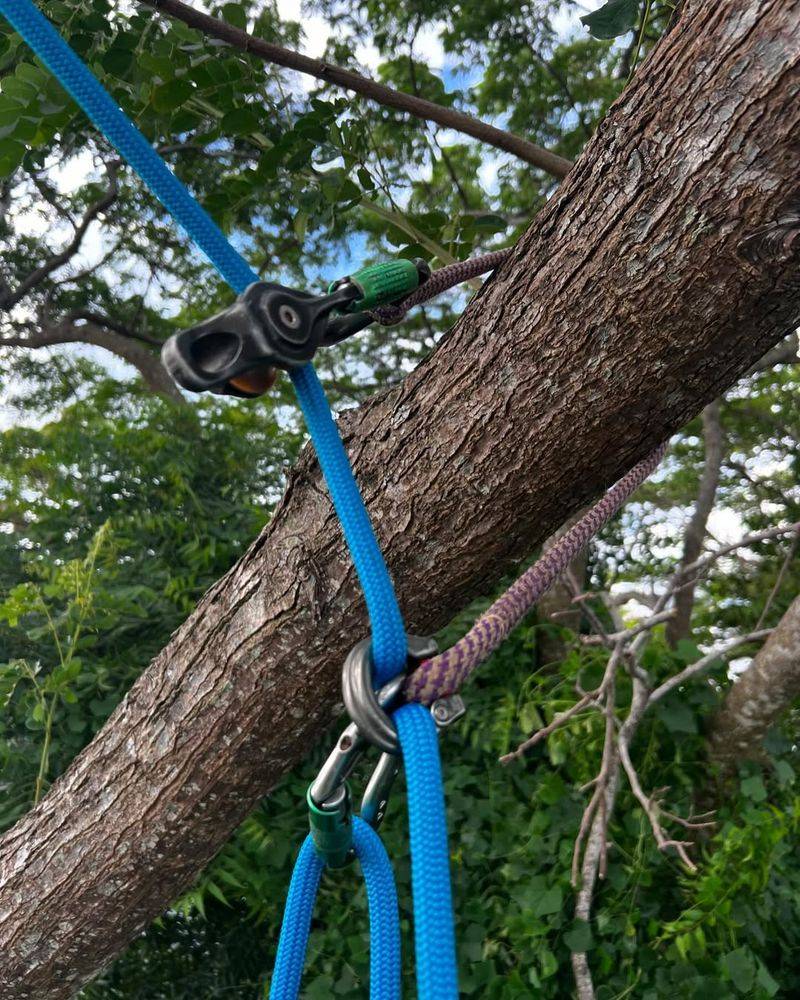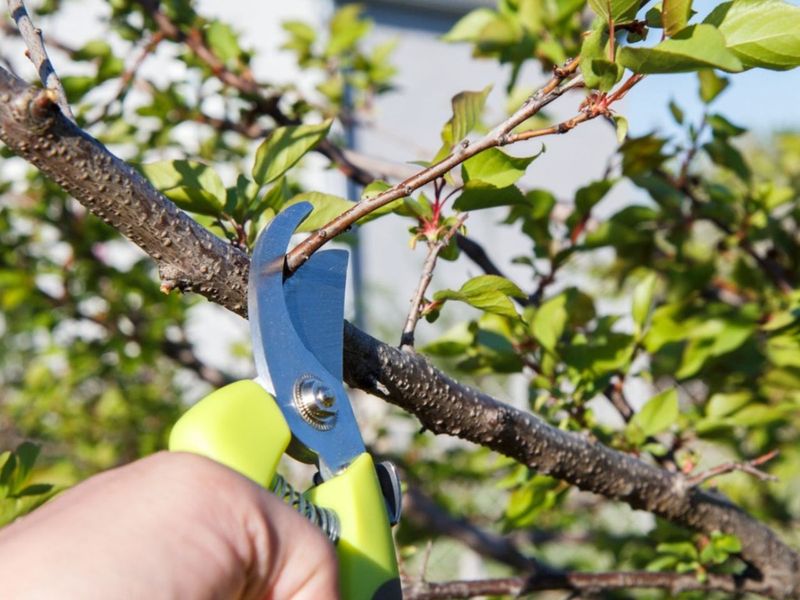Ever wondered why some orchards boast bountiful harvests while others barely produce? It’s the magic of pruning!
Picture your trees as enthusiastic dancers, needing just the right choreography to perform their best. Pruning isn’t just snipping away at branches. It’s an art, a science, and a bit of a puzzle.
Dive into these 30 fascinating facts about pruning, and discover how a few strategic cuts can transform your fruit trees from shy wallflowers to the life of the harvest party!
1. Timing is Everything
Ever tried dancing the tango to a waltz rhythm? Pruning at the wrong time can have similar results for your trees. Timing is crucial for setting the stage for maximum fruit yield.
Prune during dormancy, often late winter, to minimize stress and encourage vigorous spring growth. In contrast, summer pruning can control growth and size.
Understanding your tree’s rhythm aligns its energy, leading to healthier branches and abundant fruit. Each cut is a step in the dance, and timing ensures your trees hit the right note every season!
2. Tools of the Trade
Using the wrong tool is like trying to cut steak with a spoon. Pruners, loppers, and saws each have a role in your gardening toolbox.
Sharp tools make clean cuts, reducing damage and disease risk. Bypass pruners are ideal for small branches, while loppers tackle thicker limbs. For the big jobs, a pruning saw does the trick.
Keep them clean and sharp, and they’ll serve you well. Investing in quality tools is like buying a good pair of shoes, comfort and efficiency make all the difference!
3. The 3 D’s to Remember
Imagine keeping a closet full of moth-eaten sweaters. Dead, diseased, and damaged branches are just as useless and potentially harmful.
Removing these ‘3 D’s’ improves air circulation and sunlight penetration, essential for fruit production. Pruning them away promotes the health of the tree, allowing it to focus energy on producing quality fruit.
It’s like a detox for your trees, ridding them of anything that doesn’t contribute to their well-being. Embrace the 3 D’s, and watch your fruit quality soar!
4. The Art of Thinning
Thinning isn’t just for hair; it’s a critical part of pruning for fruit trees. By removing excess fruits, you ensure that the remaining ones have enough resources to grow large and flavorful.
Imagine sharing a single pizza with a party of ten. It doesn’t stretch far. Thinning helps your tree’s ‘pizza’—nutrients, sunlight, and water—go to fewer fruits, making each one healthier and tastier.
It’s a simple step with a deliciously rewarding outcome!
5. Heading Cuts Explained
Have you ever trimmed a hedge only to see it grow back thicker? That’s the power of heading cuts. These cuts stimulate growth by removing the tip of a branch, encouraging lateral buds to sprout.
It’s about shaping the tree and promoting dense, bushy growth. However, too many heading cuts can lead to overcrowding, so balance is key.
Use them to achieve your desired tree shape, but remember: a little snip goes a long way!
6. Understanding Scaffold Branches
Building a sturdy tree is like constructing a reliable ladder. Scaffold branches are the main framework of the tree, supporting the weight of the fruit.
Proper selection and spacing of these branches during pruning create a strong structure. Think of it as laying the groundwork for a skyscraper; the better the foundation, the higher you can build.
A well-pruned scaffold is the backbone of a bountiful harvest, ensuring stability and productivity for years to come!
7. Sunlight is Key
Imagine trying to read in the dark. Just as you need light, fruit trees need sunlight to thrive. Pruning opens up the canopy, allowing sunlight to reach inner branches.
This boosts photosynthesis, critical for fruit development. It’s like giving your tree a spotlight, helping it perform its best on the fruiting stage.
With strategic cuts, you ensure the right dose of sunlight, leading to sweeter, juicier harvests. Let the sunshine in, and watch your trees glow with health!
8. Balancing Act of Growth
Growth is like a seesaw, balance is essential. Pruning helps manage the energy between vegetative growth and fruit production.
Focus too much on leaves, and fruit quality might suffer; too much on fruit, and the tree’s health declines. Pruning helps strike the perfect balance, ensuring both branches and fruit flourish.
Imagine juggling these priorities like a circus act; with practice and precision, your efforts lead to a perfect performance. Keep the balance, and your tree’s productivity will soar!
9. The Importance of Angles
Ever seen rainwater pool on a flat roof? That’s what happens when cuts aren’t angled properly. Pruning cuts should be at a 45-degree angle to prevent water from settling, which can cause rot.
Proper angles promote healing and reduce disease risk, ensuring your tree stays healthy. Think of it as a clever life hack for your garden, allowing nature to do its thing with a little nudge from you.
Master the angle, and your trees will thank you with better health and fruit!
10. Prune to Shape, Not to Size
Chasing the tallest tree is tempting, but size isn’t everything. Pruning focuses on shaping rather than sheer size. A well-shaped tree allows better air circulation and light penetration.
Think of it like tailoring a suit; it’s about the fit, not just the measurements. By shaping your trees, you encourage a robust structure and efficient fruiting.
Don’t just aim for the biggest tree on the block. Go for the best-dressed, and watch your orchard become the envy of the neighborhood!
11. The Dormant Season Secret
When the world is asleep in winter, it’s the perfect time for action in your orchard. During dormancy, trees are less stressed by cuts, allowing them to heal before the growing season.
Picture it as a spa day for your trees—time to relax, rejuvenate, and prepare for the busy months ahead. Pruning now sets the stage for vigorous spring growth.
So, bundle up and brave the cold; your trees will reward you with a flourishing display when the frost melts!
12. The Power of Patience
In our fast-paced world, patience is a virtue—even in gardening. Pruning results aren’t immediate; they unfold over seasons.
Imagine waiting for a cake to rise; rushing doesn’t help. Each careful cut shapes the future, and patience allows your trees to respond in their own time.
It’s a gentle reminder that good things come to those who wait, and your patience will be rewarded with delicious fruits. Embrace the journey, and let time reveal the beauty of your efforts.
13. Recognizing Water Sprouts
Spotting water sprouts is like finding weeds in a garden. These vigorous, upright shoots sap energy from your tree but rarely bear fruit.
Removing them helps redirect energy to more productive branches. It’s like pruning away unwanted drama from a good story, allowing the plot to develop beautifully.
By eliminating these unproductive growths, your tree focuses its resources where they’re needed most. So, keep an eye out for water sprouts and give your tree the focus it deserves!
14. Avoiding the Topping Trap
Topping might sound like a quick fix, but it’s a trap! This practice cuts the main branches, leaving stubs that can lead to weak regrowth.
Trees respond with vigorous, often unmanageable shoots—it’s like a bad haircut that needs constant adjustment. Instead, use selective pruning to control height and shape.
It’s about finesse, not force. Avoid topping, and your trees will reward you with a healthier, more stable structure. Remember, good pruning is an art, not a hack job!
15. The Right Cut at the Right Place
Precision matters, even in the garden. Making cuts just outside the branch collar, the swollen area where a branch joins a trunk, promotes faster healing.
It’s a small detail with a big impact, like seasoning a dish to perfection. A correct cut reduces the risk of disease and decay, ensuring your tree stays robust.
Think of it as the secret ingredient in your gardening repertoire, enhancing every aspect of your tree’s health. Nail the cut, and enjoy the fruits of your meticulous care!
16. Pruning Young Trees
Imagine raising a child; early education shapes the future. Pruning young trees sets the groundwork for a strong, productive life.
Focus on establishing a solid structure and removing competing branches. It’s like teaching good habits early on; the benefits last a lifetime.
Early pruning helps your tree grow into its best self, strong and fruitful. By investing time and care in your young trees now, you’ll be rewarded with a resilient and thriving orchard in the years to come.
17. Managing Fruiting Wood
Understanding fruiting wood is like knowing the best fishing spots. These branches are where your tree produces fruit, and managing them well maximizes yield.
Prune to ensure sunlight reaches these critical areas, akin to casting your fishing line in the perfect place. With careful management, these branches will reward you with bountiful harvests.
It’s about knowing where to focus your efforts for the best returns, turning your tree into a reliable source of delicious fruits every season!
18. How to Handle Suckers
Suckers are like those pesky email threads you can’t escape. They sprout from the base of the tree, draining energy and resources.
Removing suckers directs nutrients to where they’re needed most, enhancing fruit production. It’s akin to decluttering your inbox, allowing the important messages to shine through.
By keeping suckers in check, you ensure your tree’s resources are focused on producing healthy, delicious fruit. It’s a small task with significant benefits for your orchard’s productivity!
19. The Role of Rootstock
Think of rootstock as the unsung hero of your fruit tree. It determines the tree’s size, disease resistance, and adaptability.
Choosing the right rootstock is like picking the perfect foundation for a building. Everything else depends on it. Pruning helps manage the growth and health of grafted trees, ensuring they thrive.
A wise choice in rootstock, combined with thoughtful pruning, leads to a tree that’s not only productive but also resilient. Pay attention to the roots, and your tree’s success will follow!
20. Identifying Terminal Buds
Spotting terminal buds is like finding the north star in a sea of foliage. These are the growth points at the ends of branches, guiding your pruning decisions.
Removing them can stimulate lateral growth, shaping your tree’s form. Imagine them as the leading characters in a play; they set the direction for the story.
By understanding their role, you can direct your tree’s growth, ensuring a balanced and productive canopy. It’s about knowing who’s in charge and guiding them wisely!
21. Embrace the Open Center
An open center is like a sunroof for your tree. This pruning style allows light and air to penetrate the canopy, promoting health and fruitfulness.
It’s akin to opening a window in a stuffy room, letting freshness in. By embracing this method, you ensure even ripening and reduce disease risk.
The open center creates a welcoming environment for your tree, leading to a more productive harvest. Give your trees a breath of fresh air, and enjoy the bountiful rewards!
22. The Magic of Renewal Pruning
Renewal pruning is like hitting the reset button for your tree. By removing old, unproductive branches, you stimulate new growth and revitalize your tree.
It’s like a makeover for an aging movie star, bringing back the sparkle. This method keeps your tree young at heart, ensuring continued productivity and health.
Embrace renewal pruning to breathe new life into your orchard, and watch as your trees return to their former glory, producing fruit as if they were just planted yesterday!
23. The Secret Language of Tree Rings
Reading tree rings is like deciphering a secret diary. Each ring tells a story of growth, weather, and challenges. Pruning affects these rings, guiding the tree’s future.
Understanding this language helps you make informed pruning decisions, enhancing your tree’s vitality. It’s akin to learning the backstory of your favorite book character, giving you a deeper appreciation and insight.
By listening to what the rings reveal, you become more attuned to your tree’s needs, ensuring a thriving orchard.
24. When to Call the Experts
Even the best home chefs call in a pro for a soufflé. Similarly, some pruning jobs require an expert’s touch. Large trees or complex issues might be beyond DIY fixes.
Hiring an arborist ensures safety and precision, protecting both you and your trees. It’s like having a master conductor for a grand symphony, ensuring every note is perfect.
Knowing when to call in the experts is a smart move, safeguarding your orchard’s health and your peace of mind. Don’t hesitate to seek help when needed!
25. Pruning for Pest Control
Pruning is not just about looks; it’s your tree’s first line of defense against pests. Removing infested or vulnerable branches reduces pest habitats and promotes healthy growth.
Think of it as a shield, protecting your tree from unwanted invaders. By keeping your trees well-pruned, you reduce the need for chemical interventions, taking a natural approach to pest control.
It’s a proactive step, ensuring your orchard remains a haven for healthy, thriving trees, free from pesky interruptions!
26. The Value of Visual Inspections
A keen eye is your best tool in the garden. Regular visual inspections help identify problems early, guiding your pruning strategy.
It’s like a health check-up for your trees, catching issues before they escalate. By familiarizing yourself with your orchard’s normal appearance, you can spot changes quickly, ensuring prompt action.
Consider it your secret weapon, keeping your trees in peak condition. Stay observant, and you’ll maintain the vitality and productivity of your orchard effortlessly!
27. Pruning for Air Circulation
A breath of fresh air is essential, even for trees. Pruning to improve air circulation reduces disease risk and aids ripening.
Imagine a stuffy room finally getting a cross-breeze; it brings relief and vitality. By creating well-spaced branches, you allow air to flow freely, keeping your trees healthy and productive.
It’s a simple adjustment with significant benefits, enhancing the overall well-being of your orchard. Let your trees breathe easy, and enjoy the fruits of their refreshed state!
28. Keeping Records for Success
Good record-keeping is like a personal diary for your orchard. Tracking pruning dates, methods, and outcomes helps refine your approach over time.
It’s akin to a chef perfecting a recipe through meticulous notes. By understanding what works best for each tree, you can continually improve your practices, leading to more productive harvests.
Keep a journal, and turn your pruning efforts into a well-honed craft. Your trees will thank you with abundant rewards, season after season!
29. Pruning for Safety
Safety first, even in the garden! Pruning maintains clearances from power lines, buildings, and walkways, preventing hazards.
It’s like keeping your shoelaces tied, ensuring no unexpected trips. By staying vigilant with pruning, you protect both your trees and yourself from potential accidents.
It’s a simple yet crucial part of orchard management, keeping everything safe and sound. Remember, a little foresight goes a long way in maintaining a secure and productive environment!
30. Celebrating the Pruning Process
Pruning is more than a task; it’s a celebration of growth and potential. Each cut is a step toward a healthier, more fruitful tree.
It’s like crafting a masterpiece, where every detail counts. Embrace the process, enjoy the journey, and take pride in your orchard’s transformation.
By viewing pruning as a joyful art, you cultivate not only trees but also a rewarding connection with nature. So pick up your tools, and let the celebration of your orchard’s potential begin!




